New Zealand National Parks & Wildlife
Wildlife Destinations
New Zealand is one of the last countries on earth to be inhabited and it’s natural landscape, with rivers, lakes, forests and mountains of epic proportions,
is still wild, very unpopulated and a refuge for a rich variety of marine and birdlife. Special places to visit include Kapiti Island (Wellington), Okarito and Lake Moeraki on the west coast and Kaikoura on the east coast of the South Island. Further south are the Otago Peninsula, Catlins and Stewart Island.
The far south of New Zealand has some of the most remote and wildlife rich landscapes in the country. The Catlins and Otago Peninsula are famous for their marine life, penguins, seals and albatross, and for bird lovers an extension to Stewart Island is a must and will be your best chance to see kiwi in the wild. The Fiordland experiences included here are some of the best with a choice of overnight cruises on Doubtful Sound and the chance to participate in a Te Anau conservation program whilst enjoying an amazing helicopter ride and hike on the Kepler Peninsula. There are also some magnificent overnight hikes in the area such as the Hollyford and Humpridge Tracks.
Some species to look out for and links to where:
Albatross
Northern Royal Albatross are listed as an endangered species and the world’s only mainland breeding colony is located at the tip of the Otago Peninsula. A majestic bird with a wing span up to 3m, more than 80 percent of their life is spent at sea. They are long-lived and slow to reproduce. Breeding starts at 8-10 years, a single egg is laid in October or November, in a nest which takes both parents around 80 days to incubate. Longline fishing is their biggest threat.
Hutton's Shearwater
Hutton’s shearwater/t?t? (Puffinus huttoni) is the only New Zealand seabird that breeds in a sub-alpine environment. The species is nationally endangered, with its two remaining breeding colonies located in the Seaward Kaikoura mountains.
Gannets
The Australasian gannet (takapu) is one of three species of gannet which belong to the booby family. They are usually found in large colonies on offshore island around New Zealand and southern Australia and have been nesting at Cape Kidnappers since the 1870s. Numbers have steadily increased to 6,500 pairs, which makes it the largest and most accessible mainland colony in the world.
Penguins: Little Penguin, Blue Penguin, Yellow-Eyed Penguin, Fiordland Crested Penguin
The world’s smallest penguin, little penguin (also known as little blue penguin) stand just over 25 cm and weigh around 1 kg. The plumage is slate-blue with a bright white belly. They are found on most of New Zealand's coastline and in southern Australia.
The Fiordland crested penguin, or tawaki, is one of the rarest of New Zealand’s mainland penguins. Adults stand about 60 centimetres and weigh up to four kilograms. The have a tufted yellow eyebrows stripe. South of Bruce Bay and Munroe Beach on the South Island's West Coast are good viewing spots as well as the Fiordland Coast. The hoiho, or yellow-eyed penguin, is thought to be the world's rarest penguin. Found along the south-east South Island, the Catlins and Stewart Island.
Dolphins: Hector's Dolphin, Dusky Dolphin, Bottle Nose Dolphin, Dusky Dolphin, Maui's Dolphin
One of the smallest marine dolphins in the world, Hector’s dolphins grow no more than 1.5 m in length. Only found in New Zealand’s waters, this distinctive grey dolphin with black and white markings and a round dorsal fin is the most easily recognised species of dolphin in New Zealand. Found around the South Island and southern Fiordland and frequently seen at Port Craig on the Humpridge Track. Maui’s dolphins are a sub-species of Hector’s dolphins, the world’s smallest dolphin. They are found on the west coast of the North Island of New Zealand and nowhere else in the world. It is one of the world’s rarest dolphins.
Bottlenose dolphins are widely distributed throughout the world in cold temperate. In New Zealand three main coastal populations exist: around 450 individuals live in the Bay of Islands area, ranging from Doubtless Bay in Northland to Tauranga; around 63 live in Doubtful Sound, Fiordland; and another group range from the Marlborough Sounds to Westport. Bottlenose dolphins are commonly associated with other cetaceans including pilot whales, rough-toothed and Risso’s dolphins, and humpback whales.
The Dusky dolphin (Lagenorhynchus obscurus) grows to about 2m in length. In New Zealand the main populations occurr in the South Island, in Kaikoura and Admiralty Bay in the Marlborough Sounds. Large groups of several hundred to over 1000 dusky dolphins are present in Kaikoura all year round
New Zealand Sea Lions
New Zealand sea lions are only found in New Zealand. They are one of the rarest species of sea lion in the world and arguably the most threatened because of their declining numbers and restricted breeding range. Sea lions are found mainly on beaches in Otago and Southland areas and New Zealand’s Subantarctic Islands. New Zealand sea lions are generally quite confident around people and dogs so it is important to keep at least 10 metres from them.
New Zealand Fur Seals
Kekeno (New Zealand fur seal) are the most common seals in New Zealand waters. Adults are 1.5-2.5m in length and are very good swimmers and amazing divers known to (occasionally) dive deeper than 238 m. On land they sometimes become disoriented and have been found in unusual places such as back-yards, drains and streets. One of the best places to see them is along the Kaikoura Coastal road, but they are also regular visitors and fun to spot kayaking whether in the Coromandel or Abel Tasman National Park.
Kiwi
- Brown kiwi (Apteryx mantelli)
- Rowi (Apteryx rowi)
- Tokoeka (Apteryx australis)
- Great spotted kiwi/roroa (Apteryx haastii)
- Little spotted kiwi (Apteryx owenii)
Kiwi were once more abundant and widely distributed throughout New Zealand than they are today. The overall rate of decline for kiwi populations not part of conservation programmes is estimated to be three per cent per year for brown kiwi, and two per cent for great spotted kiwi and tokoeka. Many regions of New Zealand have active kiwi conservation programs and in several areas you will be able to view kiwi breeding centres. The best place to spot kiwi in the wild is Stewart Island or Okarito Lagoon near Franz Josef. Click here for a map of current kiwi distribution.
Wekas, Kea, Kaka, Wood Pigeon, Fantails.
Excellent sanctuaries and guided tours for these birds include - Kapiti Island Nature Tours, Okarito Boat Tours, Eco Wanaka Adventures, Stewart Island Water Taxis.
Links - New Zealand Birds Online - a comprehensive directory. Our Department of Conservation.
National Parks
Tongariro National Park: Tongariro is the first national park in the world to be gifted by a country's indigenous people. In 1887 Te Heuheu Tukino IV (Horonuku), then the paramount chief of Ngati Tuwharetoa, gifted the sacred volcanic peaks of Tongariro, Ngauruhoe, and part of Ruapehu, to the people of New Zealand. This prevented the land being divided up and preserved the mana (prestige...) of the Tuwharetoa people. The Tongariro Crossing is one of New Zealand's best one-day walks, up and over an active volcanic landscape.
The Abel Tasman National Park: The Abel Tasman Coastal Track is one of New Zealand's Great Walks, a relatively easy 3 – 5 day walk from Marahau to Totoranui along beautiful coastline, past golden beaches and bush clad bays. There is a water taxi service that allows you to go in and hike sections of the track as day walks from Marahau.
Kahurangi National Park: The country's second largest national park and home to The Heaphy Track, the park also has numerous excellent day walks as well as mountain biking options.
Paparoa National Park: Luxuriant coastal forest, limestone cliffs and canyons, caves and underground streams, and an absolutely spectacular coastline, are all packed into one national park. The bizarre ‘pancake rock’ coastal formations attract visitors to the area.
Arthur's Pass National Park: Stunning high mountains with large scree slopes, steep gorges and wide braided rivers which straddle the main divide, and are the ‘back bone’ of the South Island.
Mt Cook National Park: Home to 19 peaks over 3000 metres and our highest mountain, Mt Cook at 3754 metres is also known by its Maori name of Aoraki. There are some good day walks here but it is a good idea to seek advice from the local DOC office first. Other attractions include the Sir Edmund Hilary Centre and the Old Mountaineers Cafe.
Mt Aspiring National Park: Mount Aspiring National Park is New Zealand's third largest national park and with its dramatic mixture of high mountains and beautiful river valleys, it is a walker's paradise and a must for mountaineers. It is part of Te Wahipounamu - Southwest New Zealand World Heritage Area. Hiking options include day hikes such as the Siberia Experience near Makarora, the Rob Roy Glacier day walk, The Routeburn Track and the Blue Pools-Young River track.
Fiordland World Heritage Area: Fiordland, in the far south-west corner of New Zealand has achieved World Heritage status and is renowned for the splendour of Milford and Doubtful Sounds, its hiking (the Hollyford, Humpridge, Milford, Routeburn and Kepler tracks) and vast 1.2 million hectares of national heritage park. There are a myriad of things to do here, from cruising the Fiords to hiking, kayaking, glow worm caves and helicopter flights to remote coastlines. Sections of several of the great walks are available as day walks. The main access point here is from Te Anau.
Rakiura National Park: Eighty five percent of Stewart Island is National Park and the tiny population is mainly within the fishing village of Oban. While it does have a reputation for stormy weather, the climate is actually milder than some parts of the mainland. The island is large with long multi-day hiking tracks, a variety of terrain and forest, wetland, high rocky heathlands and a convoluted coastline with several big harbours. Stewart Island is all about marine and birdlife, amazing fishing, unusual tastes such as Muttonbird, and far and away your best chance to see kiwi in the wild.
Nature & Wildlife
 Abel Tasman Luxury Boat Cruise Stephens Bay, Kaiteriteri, Nelson Region
Abel Tasman Luxury Boat Cruise Stephens Bay, Kaiteriteri, Nelson Region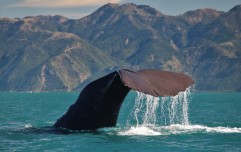 Whale Watch Cruise Kaikoura, North Canterbury
Whale Watch Cruise Kaikoura, North Canterbury Routeburn Track Guided Day Walk Queenstown, Southern Lakes
Routeburn Track Guided Day Walk Queenstown, Southern Lakes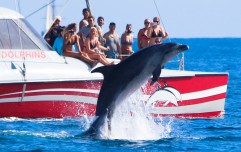 Wildlife Cruises Paihia, Bay of Islands
Wildlife Cruises Paihia, Bay of Islands Nature Tour & Lake Cruise Wanaka, Southern Lakes
Nature Tour & Lake Cruise Wanaka, Southern Lakes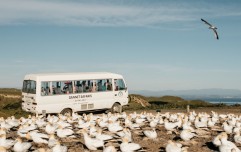 Gannet Safari Cape Kidnappers, Hawke's Bay
Gannet Safari Cape Kidnappers, Hawke's Bay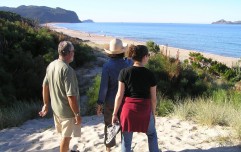 Guided Walks & Private Nature Tours Waihi & North Island
Guided Walks & Private Nature Tours Waihi & North Island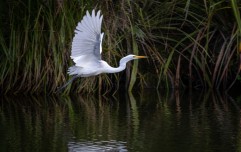 Boat based eco tour Okarito, near Franz Josef, West Coast
Boat based eco tour Okarito, near Franz Josef, West Coast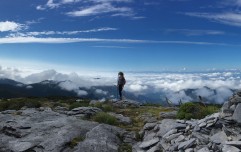 Private Wine, Art & Wilderness Tours Nelson Region
Private Wine, Art & Wilderness Tours Nelson Region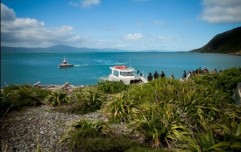 Kapiti Island Bird Sanctuary Tour Kapiti Island, near Wellington
Kapiti Island Bird Sanctuary Tour Kapiti Island, near Wellington Moutohora Island Sanctuary Tour Whakatane, Bay of Plenty
Moutohora Island Sanctuary Tour Whakatane, Bay of Plenty Dolphin Encounter Kaikoura, North Canterbury
Dolphin Encounter Kaikoura, North Canterbury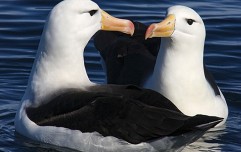 Albatross Encounter Kaikoura, North Canterbury
Albatross Encounter Kaikoura, North Canterbury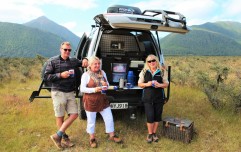 Private Nature Tours Canterbury & South Island
Private Nature Tours Canterbury & South Island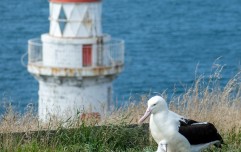 Albatross breeding colony Otago Peninsula
Albatross breeding colony Otago Peninsula
